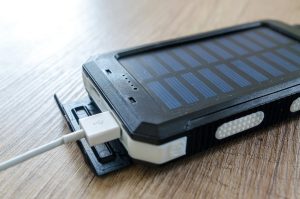U.S. Infrastructure Act: Paving Roads for Autonomous Fleets
Have you ever imagined a world where cars drive themselves on the roads, with no human intervention needed? Well, this is no longer just a fantasy. With the advancement of technology, autonomous vehicles have become a reality and are set to revolutionize the transportation industry. However, for this game-changing technology to truly take off, proper infrastructure must be in place. This is where the U.S. Infrastructure Act comes into play.
What is the U.S. Infrastructure Act?
The U.S. Infrastructure Act, also known as the American Jobs Plan, is a proposed $2 trillion infrastructure investment plan by President Joe Biden. It aims to repair and upgrade the country’s physical infrastructure, including roads, bridges, ports, airports, and broadband internet. This plan is not just about fixing the existing infrastructure, but also focuses on modernizing the transportation sector by preparing it for the next big thing – autonomous fleets.
The Role of U.S. Infrastructure Act in Paving Roads for Autonomous Fleets
One may wonder, why do we need special infrastructure for self-driving cars? Can’t they use the same roads as traditional vehicles? The answer is no. Autonomous vehicles require a whole new level of infrastructure to operate safely and efficiently. Here’s how the U.S. Infrastructure Act is paving the way for autonomous fleets:
1. Connectivity
To operate, autonomous vehicles need to communicate with each other and with the surrounding infrastructure. This requires high-speed and reliable internet connectivity. The U.S. Infrastructure Act aims to bring affordable and high-speed broadband internet to every American household, even in rural areas. This will not only benefit traditional vehicles but also allow autonomous fleets to operate seamlessly across the country.
2. Upgraded Roads
Autonomous vehicles use a variety of sensors, cameras, and radars to navigate and avoid collisions. These sensors need clear road markings and signage for effective functioning. Unfortunately, many roads in the U.S. are in poor condition, with faded lanes and missing signs. The U.S. Infrastructure Act plans to allocate funds towards upgrading roads to meet the requirements of self-driving cars.
3. Smart Traffic Management
With the increase in the number of autonomous vehicles on the road, the traffic flow will become more complex. This is where smart traffic management comes into play. The U.S. Infrastructure Act also includes plans for the development of smart traffic management systems that will help regulate the flow of traffic and reduce congestion. This will not only benefit autonomous fleets but also improve the overall driving experience for traditional vehicles.
4. Charging Infrastructure for Electric Vehicles
Electric cars are the way forward, and most of the autonomous fleets are expected to be electric. To support this shift, the U.S. Infrastructure Act has plans to install 500,000 electric vehicle charging stations across the country. This will not only make it convenient for the owners of electric vehicles but also for self-driving cars, which will need to recharge their batteries.
The Impact of U.S. Infrastructure Act
The U.S. Infrastructure Act is set to have a significant impact on the transportation sector, and in turn, the autonomous vehicle industry. With its ambitious plans, the act will bring the country’s infrastructure up to date and make it ready to embrace the future of transportation – autonomous fleets. This will not only benefit the industry but also improve the safety and efficiency of our roads.
In conclusion, the U.S. Infrastructure Act is a crucial step towards preparing the country for autonomous fleets. Its focus on upgrading infrastructure and developing smart systems will support the smooth operation of self-driving cars. With this act in place, we may soon be living in a world where we can sit back, relax, and let our cars do the driving for us.











